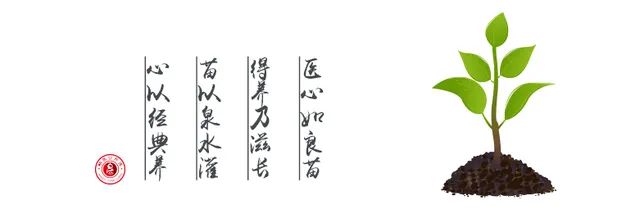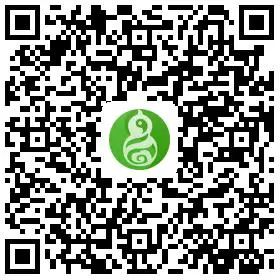
Ming Yi Open Class
>>>Lesson 3431<<<
Traditional Chinese medicine (TCM) literature contains rich discussions on pulse diagnosis. In the Yuan dynasty, Dai Qizong clearly proposed the pulse diagnosis concepts of “fen, he, ou, bi, lei”. Among these, “fen” refers to the understanding of a specific pulse pattern, while “he” refers to the elaboration of combined pulse patterns, namely the combined pulse. However, throughout history, physicians have described single pulses more frequently, while the elaboration on combined pulses has been relatively scarce. Through preliminary research, we have found that the Chen Xi Mai (沉细脉) has certain theoretical value, but its discussions in ancient texts are relatively scattered and lack systematic organization and summary.
The Chen Xi Mai is a combined pulse of the Chen Mai (沉脉) and the Xi Mai (细脉). The Western Jin dynasty physician Wang Shuhe stated in his “Pulse Classic” that “the Chen pulse is insufficient when lifted, but excessive when pressed”. The Qing dynasty physician Zhang Lu in “Zhen Zong San Mei” described the Xi pulse as “a pulse that comes and goes like a hair and is clearly felt beneath the fingers”. The combined pulse reflects the characteristics of both the Chen and Xi pulses. This article is based on ancient literature related to the Chen Xi Mai, discussing the main syndromes and diseases associated with it, enriching the theoretical connotation of the Chen Xi Mai, and aiming to further broaden its clinical application.
Main Syndromes of the Chen Xi Mai
The Ming dynasty physician Li Shizhen in “Binhuh Maixue” stated that “the Chen pulse indicates internal conditions, cold, and accumulation. It indicates strong phlegm and food, but weak qi and stagnation”. The Ming dynasty physician Li Zhongzi in “Zhen Jia Zheng Yan” stated that “the Xi pulse indicates qi deficiency and various forms of weakness and damage”. The Qing dynasty physician Chen Xiuyuan summarized it as “Chen indicates internal conditions” and “Xi indicates various deficiencies”. It can be seen that the Chen Xi Mai should encompass the characteristics of both the Chen and Xi pulses. Reviewing ancient texts, the main syndromes associated with the Chen Xi Mai include the following three aspects.

Main Yang Deficiency Syndrome
The Qing dynasty physician Wang Bangfu in “Mai Jue Ru Hai” stated, “If the pulse is seen as Chen, it indicates Yang deficiency”. The Qing dynasty physician Zhang Lu stated, “The Xi pulse indicates weakness of Yang qi”. The Chen and Xi pulses can independently indicate Yang deficiency, or they can combine to indicate Yang deficiency. The Qing dynasty physician Huang Yunxi in “Mai Que” stated, “The floating Xi pulse belongs to Yin deficiency, while the Chen Xi pulse belongs to Yang deficiency”. The Xi pulse indicates overall qi and blood deficiency, and there are distinctions between Yang deficiency and Yin deficiency. A floating Xi pulse indicates Yin deficiency, while a Chen Xi pulse indicates Yang deficiency. The Qing dynasty physician Li Yanxi also stated, “Generally, a floating and fine pulse belongs to the Yang aspect… while a Chen and fine pulse belongs to the Yin aspect”. When Yang qi is deficient, its driving force weakens, and the pulse qi cannot effectively propel and elevate the pulse pathway, resulting in a sinking and fine pulse.

Main Cold Syndrome
The Song dynasty physician Xu Shuwei in “Pujizhengshi Fang” stated, “Chen Xi indicates cold”. The Qing dynasty physician Guo Yuanfeng described, “There are pulses like fine ones, which may be due to sudden exposure to cold, causing extreme pain and obstruction in the meridians, leading to the blood becoming Chen and fine and unable to circulate, thus the fine pulse cannot be generalized as deficiency, and it may be mistakenly treated with tonics, solidifying the evil qi”. Here, the evil qi refers to cold evil. The Qing dynasty physician Huang Gongxiu also stated, “A fine and combined Chen pulse indicates internal cold”. Cold evil obstructs the pulse, or it may arise from Yang qi deficiency, which weakens its warming and transforming functions, leading to the internal generation of cold evil; or it may arise from external cold directly entering the interior and obstructing the meridians, causing the blood vessels to contract and stagnate, resulting in a Chen and fine pulse.

Main Dampness Syndrome
The Ming dynasty physician Li Zhongzi in “Yizong Bidu” stated, “Chen Xi indicates dampness”. The Qing dynasty physician Yao Qiu in “Shanghan Jing Jie” stated, “Chen Xi indicates dampness”. The Chen pulse indicates internal conditions, while the Xi pulse indicates dampness; the dampness indicated by the Chen Xi pulse is more inclined towards internally generated dampness, or due to Yang qi deficiency, leading to dysfunction in the transformation of fluids, resulting in dampness and turbidity spreading. Dampness is heavy and turbid, easily descending, and the pulse may present as a downward trend; dampness obstructs the qi mechanism, damaging Yang qi, and the body’s Yang qi is held back by dampness, leading to qi and blood not circulating, hence the pulse appears fine. The Jin dynasty physician Cheng Wuji stated, “The pulse of dampness should be Chen and fine”.
From the above, it can be seen that the main syndromes of the Chen Xi Mai are Yang deficiency, cold, and dampness. These three are interrelated; when Yang qi is deficient, its driving, warming, and transforming functions weaken, leading to the generation of cold and dampness, and the cold and damp evils further obstruct Yang qi, exacerbating Yang deficiency.
Diseases Associated with the Chen Xi Mai
The Chen Xi Mai, as a commonly seen combined pulse in clinical practice, often appears in various diseases. In textbooks such as “TCM Internal Medicine”, “TCM External Medicine”, and “TCM Gynecology”, the Chen Xi Mai appears frequently, and the diseases associated with it are very broad. For example, the Chen Xi Mai appears 90 times in “TCM Internal Medicine”, with associated diseases including asthma, diarrhea, abdominal pain, edema, urinary retention, and turbid urine; it appears 103 times in “TCM External Medicine”, with associated diseases including internal prolapse, male infertility, oily wind, frostbite, red butterfly sore, and breast lumps; it appears 49 times in “TCM Gynecology”, with associated diseases including infertility, early menstruation, menorrhagia, dysmenorrhea, amenorrhea, and polycystic ovary syndrome. Thus, it can be seen that the diseases associated with the Chen Xi Mai encompass a wide range of systemic diseases. In ancient literature, there are discussions on “Chen Xi internal accumulation”, “Chen Xi breast lumps”, “Chen Xi damp obstruction”, and “Chen Xi as Yin itch”, indicating that among the many diseases associated with the Chen Xi Mai, it is closely related to internal accumulation, breast lumps, damp obstruction, and Yin itch.

Internal Accumulation
The Chen Xi Mai indicates internal accumulation. The “Jin Kui Yao Lue Zheng Yi” states, “All cases of Yin cold condensing and forming gradually are called accumulation. Therefore, all accumulations do not have a single example of symptoms, but have a certain Chen Xi pulse pattern”. The Ming dynasty physician Wang Huan in “Mai Li Ji Yao” stated, “Chen Xi indicates accumulation” and “Chen Xi indicates internal accumulation”. The concept of accumulation originates from the “Huangdi Neijing”, meaning gathering, condensing, and retaining. Modern medical conditions such as liver and spleen enlargement, proliferative intestinal tuberculosis, and abdominal tumors can fall under the category of accumulation.
The pathogenesis of tumors is based on deficiency with excess. The Ming dynasty physician Li Zhongzi stated, “The formation of accumulation is due to insufficient righteous qi, which allows evil qi to take hold”. Deficiency of righteous qi is a prerequisite for tumor occurrence and development. When the body’s righteous qi is insufficient, evil qi must gather, and pathological factors such as qi stagnation, blood stasis, phlegm retention, cold dampness, and toxic stasis continuously coalesce, leading to tumor formation under the stimulation of evil qi; and with insufficient righteous qi, the body’s ability to restrain tumor growth weakens, resulting in accelerated tumor growth. Zhang Yuanshu stated, “Nourishing the righteous qi will eliminate the accumulation”. Ancient physicians recognized early on that deficiency of righteous qi is the foundation for tumor development and gradually developed the academic thought of “supporting the righteous and nurturing the root” in tumor treatment. The Chen Xi Mai indicates internal conditions, with insufficient righteous qi unable to propel and fill the pulse pathway, thus the pulse often appears Chen and fine and weak. The Chen Xi Mai also indicates cold; the “Ling Shu: Bai Bing Shi Sheng” states, “The beginning of accumulation arises from cold, as cold evil reverses upwards, causing qi stagnation and obstruction, gradually developing into accumulation”. Zhang Zhongjing in “Jin Kui Yao Lue” stated, “For all accumulations, if the pulse is fine and attached to the bone, it is indeed accumulation”. Thus, it can be seen that there is a close relationship between accumulation and the Chen Xi Mai.

Breast Lumps
The Chen Xi Mai indicates breast lumps. Pulse diagnosis is one of the main methods for diagnosing and differentiating diseases in children. Zhang Jingyue stated, “Therefore, when diagnosing children, since they cannot express themselves, it is especially important to rely on the pulse, supplemented by their appearance, color, and voice, to ensure accuracy”. The Southern Song dynasty physician Liu Fang stated, “Chen Xi indicates breast lumps”. Pediatric breast lumps refer to the inability of children to digest milk and food. The Ming dynasty physician Xue Kai stated, “Chen indicates difficulty in digesting milk and food, while Chen Xi indicates stagnation of milk and food”. Wang Kentang further simplified it to “Chen Xi pulse indicates undigested milk and food”. The inability of children to digest milk and food, as indicated by the Chen Xi Mai, is due to the cold nature of the Chen Xi Mai.
The Sui dynasty physician Chao Yuanfang stated, “Children with undigested food are due to cold in the spleen and stomach”. Children have not fully developed their qi and require a large amount of nutrients from food, while their organs are delicate, and their spleen qi is insufficient to process the fine substances they ingest, making it difficult to maintain a balance between these two factors, often leading to symptoms of undigested milk and food and stagnation. Cold in the spleen and stomach further affects the balance between the spleen and stomach’s ability to receive and transform, leading to difficulty in digesting milk and food. The Chen Xi Mai indicates cold, which harms the spleen and stomach, leading to undigested milk and food, thus pediatric breast lumps can be seen with the Chen Xi Mai. The symptoms of breast lumps associated with the Chen Xi Mai are often due to the effects of cold on the child’s spleen and stomach, causing dysfunction, and the core issue remains the cold nature of the Chen Xi Mai.

Damp Obstruction
The Chen Xi Mai indicates damp obstruction. The Ming dynasty physician Li Shizhen in “Binhuh Maixue” stated, “Chen Xi indicates damp obstruction”. The Qing dynasty physician Pan Ji in “Yi Deng Xu Yan” annotated that “Chen indicates internal conditions, while Xi indicates dampness; Chen Xi indicates damp obstruction”. Chen Xi damp obstruction can be understood not only as damp evil obstructing and blocking the pulse pathway, leading to a Chen and fine pulse, but also refers to the disease of damp obstruction.
The term damp obstruction first appeared in Zhang Zhongjing’s “Jin Kui Yao Lue”, stating, “In Taiyang disease, if there is joint pain and vexation, and the pulse is Chen and fine, this is called damp obstruction”. Damp obstruction occurs when damp evil combines with wind and cold evil, flowing into the joints, leading to obstruction and causing heat and pain. The Qing dynasty physician Feng Zhaozhang stated, “Damp obstruction resembles a spasm, with a pulse that is Chen and fine, joint pain, and a feeling of vexation”. Damp evil obstructs the meridians, hence the joint pain; damp evil steaming internally without resolution leads to heat and vexation. Damp obstruction as a disease has both dampness as the main pathological factor and a deficiency aspect. Damp obstruction belongs to modern rheumatic diseases, where glucocorticoids play an irreplaceable role in the treatment of rheumatic diseases. Glucocorticoids can rapidly reduce disease activity, improve patient symptoms and immune function, but excessive use can lead to hormone dependence, damaging Yin and consuming qi, thus harming both Yin and Yang, leading to Yang deficiency or even both Yin and Yang deficiency. Wu Shengyuan from Yunnan Provincial Hospital of Traditional Chinese Medicine believes that Yang deficiency is a common internal cause in rheumatic disease patients, while cold dampness is an external cause, with Yang deficiency being the main pathogenesis. The Chen Xi Mai indicates Yang deficiency, cold, and dampness, hence it is often seen in rheumatic diseases.

Yin Itch
The Chen Xi Mai indicates Yin itch. Yin itch refers to itching in the genital area, and the pathogenesis is mainly related to parasitic infections, liver channel damp-heat, and kidney qi deficiency. The Qing dynasty physician Guan Yuheng in “Zhen Mai San Shi Er Bian” stated, “A deep pulse indicates kidney cold, which leads to cold pain in the lower back, coldness in the male essence, and blood stasis in females; a Chen Xi pulse indicates Yin itch”. This discusses the pathogenesis of Yin itch related to kidney deficiency using the Chen Xi Mai. The Chen Xi Mai indicates deficiency and dampness, and the pathogenesis of Yin itch is based on kidney deficiency, with dampness as a secondary factor, and it may flare up upon exposure to wind evil. Therefore, Yin itch of the kidney deficiency type is often seen with the Chen Xi Mai. Li Bohua from Beijing University of Chinese Medicine believes that the kidney opens to the two Yin, and deficiency of kidney essence is the main cause of genital itching in the elderly, where those with kidney Yin deficiency present with a fine and rapid pulse, while those with kidney Yang deficiency present with a Chen and slow pulse, and those with both kidney Yin and Yang deficiency may present with both types of pulses.

Long press to scan the code to register and click to view details
Build Your Own Air Pharmacy with Zero Cost

Free Micro-Lessons | Learn Clinical Cases | Build a Studio
Copyright Statement
· This article is adapted from the China Traditional Chinese Medicine News, compiled from the “Journal of Basic Chinese Medicine” Volume 29, Issue 8, August 2023, a national-level intangible cultural heritage protection project “TCM Diagnostic Methods” series research paper, authors Chi Haoran, Yang Lei, Yu Qiuhui, Du Song, Liu Zhaihua / Institute of Basic Theory of Traditional Chinese Medicine, China Academy of Chinese Medical Sciences. Published by Ming Yi Open Class. Please indicate the source when reprinting.
· Copyright belongs to the relevant rights holders. Sharing this article is for the purpose of dissemination and learning exchange, and does not take responsibility for the views expressed in the article. If there are any improper uses, please feel free to contact us.
· For submissions, please add the Ming Yi customer service WeChat: mingyikefu
If you have other content you are interested in, want to learn about, or want to study,
Please leave a message in the comment area below!

Click “Read the original text” to easily register!

